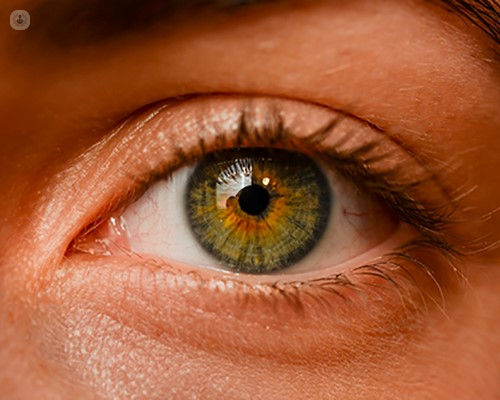Understanding epiretinal membrane: Causes, symptoms, and treatment
Written in association with:The human eye is a marvel of biological engineering, orchestrating complex processes to capture and interpret the visual world. However, various conditions can impact the delicate structures within the eye, affecting vision and overall ocular health. One such condition is the epiretinal membrane (ERM), a relatively common yet often misunderstood affliction. In his latest online article, Mr Bhaskar Gupta delves into the intricacies of epiretinal membrane, exploring its causes, symptoms, diagnosis, and potential treatment options.

Understanding epiretinal membrane:
Epiretinal membrane, also known as macular pucker or cellophane maculopathy, is a thin layer of fibrous tissue that forms on the surface of the retina, particularly the macula – the central part of the retina responsible for detailed central vision. This membrane may develop due to various factors, including age-related changes, trauma, inflammation, or underlying eye conditions.
Causes:
Age-related changes: The primary cause of epiretinal membrane is often attributed to the natural aging process. As individuals grow older, the vitreous gel inside the eye can undergo changes, leading to the formation of the membrane on the retina.
Eye conditions: Pre-existing eye conditions, such as retinal detachment, diabetic retinopathy, or inflammation in the eye, can increase the risk of epiretinal membrane formation.
Trauma or surgery: Physical trauma to the eye or previous eye surgeries may also contribute to the development of epiretinal membrane in some cases.
Symptoms:
Epiretinal membrane can cause subtle to noticeable changes in vision.
Common symptoms include:
Blurred or distorted central vision: Objects may appear distorted or wavy, and fine details may become difficult to perceive.
Reduced visual acuity: The clarity of central vision may diminish, impacting activities like reading or recognising faces.
Diagnosis:
An eye care professional can diagnose epiretinal membrane through a comprehensive eye examination.
This may include:
Dilated eye exam: The doctor will use special eye drops to dilate the pupils, allowing for a thorough examination of the retina.
Optical coherence tomography (OCT): This non-invasive imaging test provides detailed cross-sectional images of the retina, helping to identify the presence and severity of an epiretinal membrane.
Treatment options:
While some individuals with epiretinal membrane may not experience significant visual impairment, others may require intervention. Treatment options include:
Observation: In mild cases where symptoms are minimal, close monitoring may be recommended without immediate intervention.
Vitrectomy: Surgical removal of the vitreous gel, along with the epiretinal membrane, may be considered in more severe cases to improve vision.
Anti-VEGF medications: In some instances, injections of anti-vascular endothelial growth factor (anti-VEGF) drugs may be used to reduce inflammation and prevent further membrane formation.
Mr Bhaskar Gupta is a respected ophthalmologist. You can schedule an appointment with Mr Gupta on his Top Doctors profile.


